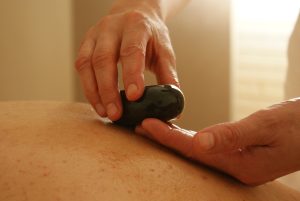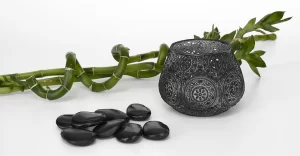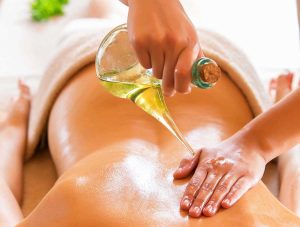A massage with Himalayan salt is not only a relaxation procedure but also a unique way to achieve harmony between the body and soul. Himalayan salt, known for its remarkable properties, adds extra benefits to the massage, making it an unparalleled option for taking care of your health.
In this article, we will explore what makes this procedure special, the benefits it brings to your skin and body, and how to prepare for this unique experience. Get ready to immerse yourself in a world of relaxation and well-being, where each touch will bring you not only pleasure but also a caring touch for your overall wellness.
Benefits of Massage with Himalayan Salt
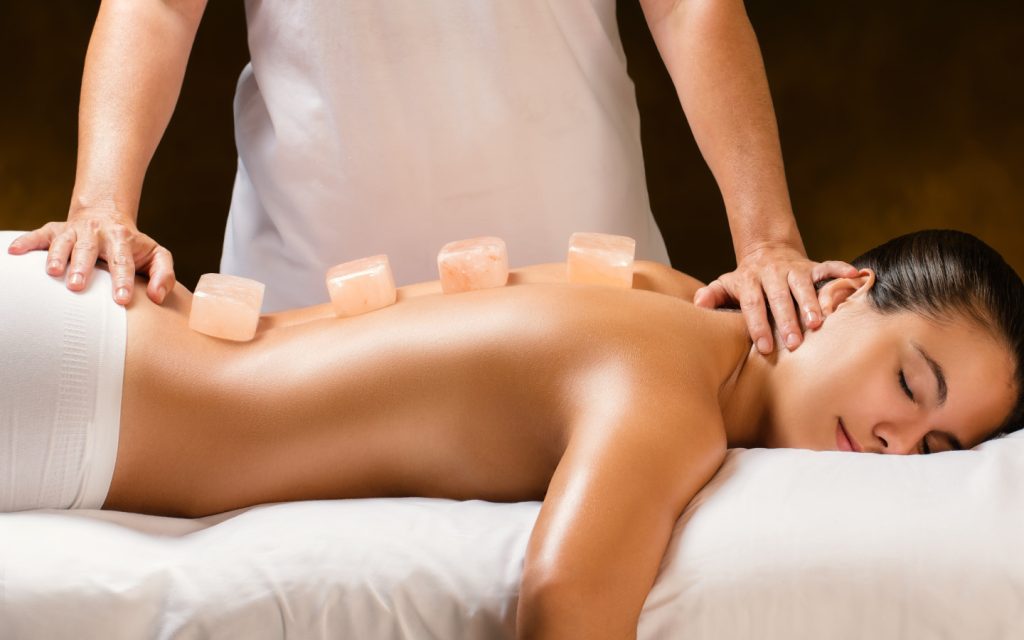

Here are some key advantages of this unique form of relaxation:
- Nourishing Mineral Complex: Himalayan salt contains a rich mineral complex, including magnesium, calcium, and potassium. These elements nourish the skin, improve its texture, and impart a healthy glow.
- Effective Exfoliation: Fine crystals excellently serve the purpose of natural exfoliation, removing dead cells and stimulating skin renewal.
- Enhances Blood Circulation: Promotes improved blood circulation, facilitating the efficient transport of oxygen and nutrients to cells, thereby accelerating the recovery processes.
- Chemical-Free Stress Relief: The absence of chemical additives makes the procedure an ideal way to relax tense muscles and reduce stress.
- Endorphin Release: Contributes to the release of endorphins, positively impacting mood and aiding in achieving deep relaxation, thereby improving sleep quality.
- Detoxification Benefits: Aids in the removal of toxins from the body, promoting overall well-being.
- Balancing Mineral Composition: The mineral composition of the salt helps maintain balance in the body, strengthening the immune system and enhancing its resistance.
Ingredients and Preparation for Himalayan Salt Massage


Before delving into the unique experience of this procedure, it is essential to prepare properly and use suitable ingredients. Here are the steps and components for an effective massage session:
- The specialist discusses the patient’s expectations and health specifics to tailor the session to their needs.
- The massage therapist selects high-quality Himalayan salt with minimal processing.
- Determines the amount of salt based on the area to be massaged.
- Preheats the Himalayan salt before use to create a pleasant warm sensation upon contact with the skin.
- Uses natural oils such as almond, olive, or coconut oil.
- Adds oil to enhance glide and moisturize the skin.
- Incorporates a few drops of essential oils to impart additional aromatic and therapeutic properties to the procedure.
- Prepares a warm towel or blanket for the patient to create a comfortable environment and aid muscle relaxation.
- Places candles or a diffuser with aromatic oils to create a pleasant fragrance.
Himalayan Salt Massage Technique
Correct technique is crucial for achieving maximum benefits and relaxation for the client. Here is a step-by-step guide on the technique:
- The massage therapist blends Himalayan salt with oil, creating a paste with a pleasant texture.
- The paste is applied to the client’s skin, starting from the back, neck, and shoulders.
- Soft, circular motions are employed. This helps the salt effectively exfoliate and stimulate blood circulation.
- The specialist focuses on tense areas, gently smoothing out the muscles.
- The massage therapist avoids excessively sensitive areas, such as the neck, chest, or the area around the eyes, concentrating on other parts of the body.
- The duration of the procedure is adjusted based on the client’s preferences and the goals of the session, typically lasting from 30 to 60 minutes.
- After the session, the client is offered a shower to thoroughly rinse off any remaining salt residue from the skin.
- The procedure concludes with the application of moisturizing cream or oil to maintain the skin’s softness and hydration.
- The client is given time to relax and share their impressions. The massage therapist provides recommendations for skin care after the procedure.
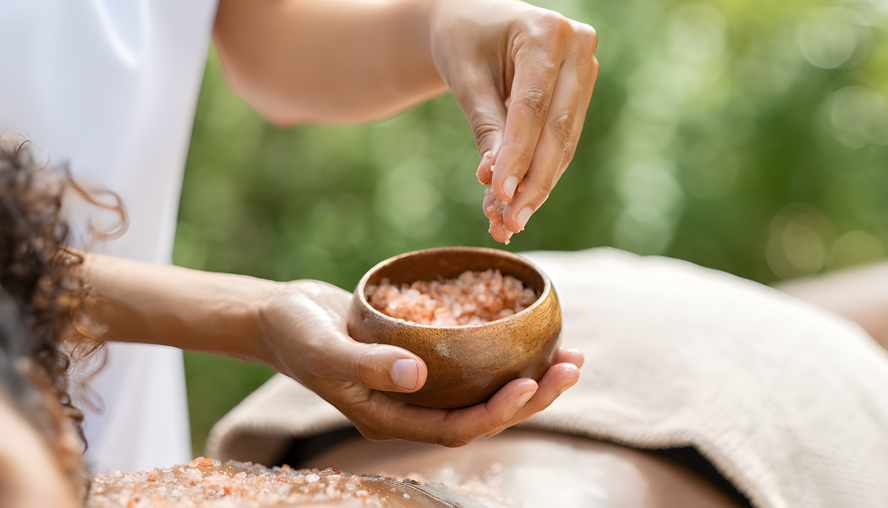

Contraindications for Himalayan Salt Massage
Despite the numerous positive effects, this session may not be recommended in certain cases. Here are some contraindications:
- Individuals with sensitive skin or allergies to components of Himalayan salt.
- Presence of open wounds or abrasions on the skin.
- People with serious skin conditions such as eczema or psoriasis.
- Individuals with cardiovascular issues, high blood pressure, or circulatory problems.
- Pregnant women are advised to avoid the procedure in the first trimester. In subsequent periods, it is recommended to discuss the possibility of the procedure with a doctor.
- Individuals suffering from oncological diseases or undergoing chemotherapy.
- People with kidney problems due to the potential increase in the load on the renal system.
Questions and Answers:
What is a Himalayan Salt Stone Massage?
A Himalayan salt stone massage is a therapeutic massage technique where massage therapists use warm hand-carved salt stones to apply pressure, soothe muscles, and promote relaxation.
What are the benefits of Himalayan Salt Stone Massage?
Himalayan salt contains The benefits of a Himalayan salt stone massage include improved relaxation, skin exfoliation, and the release of negative ions that can benefit the central nervous system.
How does a Himalayan Salt Stone Massage differ from a Hot Stone Massage?
A Himalayan salt stone massage utilizes heated salt stones instead of traditional hot basalt stones used in a hot stone massage. The salt stones are said to contain 84 naturally occurring minerals that offer unique therapeutic benefits.
What are the main elements in the Himalayan Salt Stone Massage?
A Himalayan massage therapist may use salt crystals or heated salt stones in the technique to help balance the central nervous system and promote relaxation through the release of negative ions.
How does salt contribute to the relaxation process in a massage?
Salt is said to have electromagnetic properties that can aid in relaxation and muscle soothing during a massage session.
Why is it recommended to try Himalayan Salt Stone Massage?
Himalayan massage is believed to provide a unique experience that balances the central nervous system and offers the potential benefits of the 84 minerals and elements found in the Himalayan mountains.
Is there a difference between traditional hot stone massage therapy and Himalayan Salt Stone Massage?
While both techniques involve heated stones, a Himalayan Salt Stone massage utilizes heated salt stones specifically, which are believed to have additional therapeutic properties compared to traditional hot stone techniques.
What minerals are present in Himalayan salt, and what are their beneficial properties for the skin?
Himalayan salt contains magnesium, calcium, potassium; their beneficial properties include nourishing the skin and improving its texture.
How often is it recommended to have a massage with Himalayan salt for optimal results?
The recommended frequency for a Himalayan salt massage is 1-2 times a week, depending on individual skin needs.

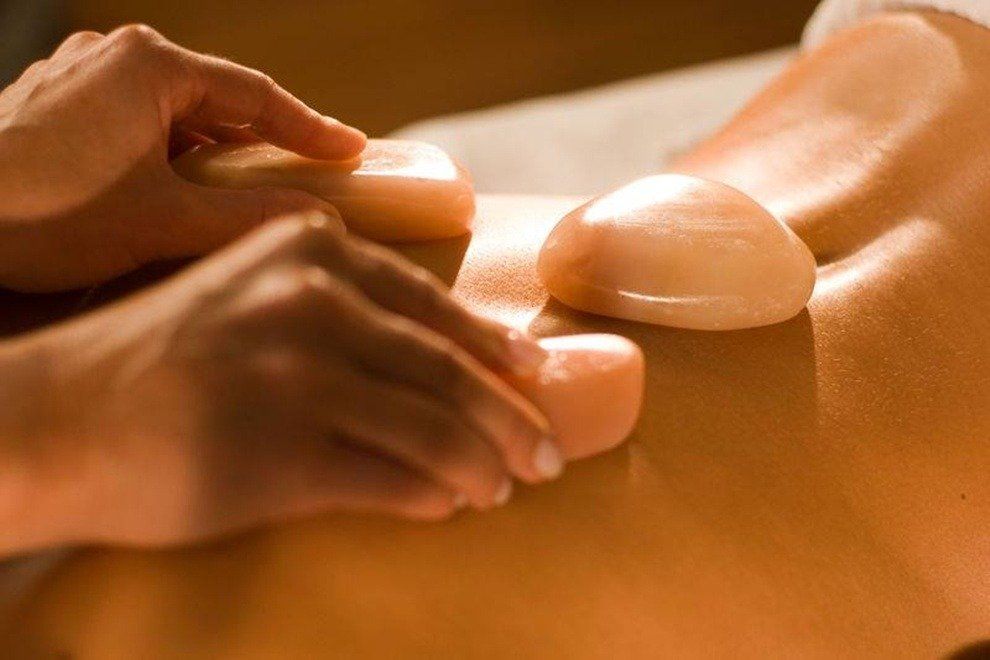











![11 Best Alternatives to Bedpage: Your Ultimate Guide [March 2024]](https://massage.dating/wp-content/uploads/2024/03/Best-Alternatives-to-Bedpage-300x200.jpg)















































